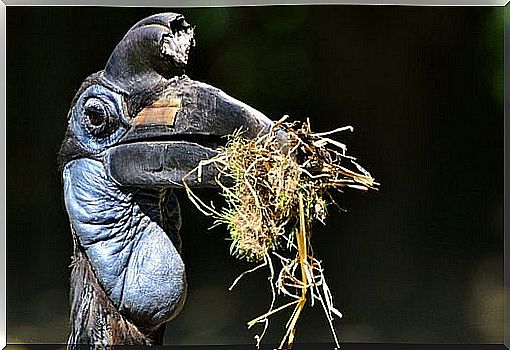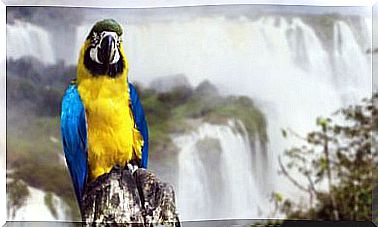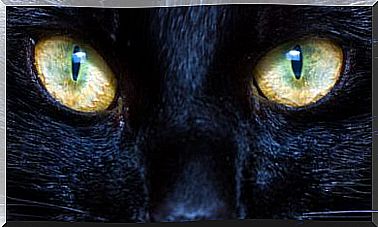Helmet Hornbill: Breeding And Characteristics

The Buderotidae family , commonly known as the hornbill , includes about 55 living species. These birds are distributed throughout Asia, Malaysia and tropical and subtropical Africa.
They usually have a black, gray or brown plumage with some white details on the tails. Its dark tones are offset by bright tones in the beak or colored patches on the skin, face and part of the neck.
In this type of bird, the size varies considerably depending on the species. For example, the species Tockus hartlaubi measures approximately 30 centimeters and weighs about 102 grams, while the southern terrestrial hornbill can measure 1.2 meters and weigh 6 kg. Males are usually larger than females, but this changes by species.
They have a huge, flat, curved beak, with jagged edges and bony “hooves” over the upper jaw. In addition, they use their beaks as an instrument that helps them fight, clean their bodies, build nests and capture prey.
Mating and breeding of the Horned Hornbill
Helmet hornbills usually form monogamous pairs. In courtship, the man and the woman chase each other, put their beaks together and sing. Before mating, the male offers the female a gift in the form of food as a token of his loyalty. This gift can be an insect or a fruit.
Nesting sites can be holes or cracks in trees or rocks. These holes are normally natural. However, some species can nest in abandoned woodpecker nests.

When the female is ready to lay her eggs, she locks herself in the nest leaving a very narrow opening. This door is constructed with mud, excrement and food brought in and regurgitated by the male.
Thus, males use this opening to pass food to the female and the young. This dynamic continues until the chicks grow too big and the mother breaks the nest wall. At this point, the parents are responsible for feeding the chicks until they are ready to leave the nest.
The size of the hornbill’s posture varies according to the species. Larger species lay around one or two eggs, but smaller ones can reach eight eggs. During this incubation period, the female moults most of the feathers on her tail and wings.
The giant hornbill is the only species that does not use the same reproduction method as the other species, as it does not close the entrance and usually creates a nest in the holes of the vegetables. The female and male take turns incubating the eggs and caring for the young.
Conservation of the hornbill
The conservation status of hornbills is classified as vulnerable. Many of the species are threatened by poachers looking for their glowing feathers. In addition, the hornbills have suffered a significant loss of their habitats.

For these reasons, several organizations are generating a movement for the conservation of these birds. The San Diego Zoo, for example, has a long history with the Abyssinian terrestrial hornbill.
When the first male arrived in 1951, he was sent to the San Diego Zoo Safari Park to mate with a female in 1972. The first terrestrial hornbill calf outside Africa was successfully bred. In 1995, 43 puppies had already been generated. Most were transferred to other zoos in North America.
Today, the San Diego Global Zoo has the most complete collection of hornbills in the United States: it has 30 species between the zoo and Safari Park. These places are visited by many people in love with birds.
Another notable conservation program is Hornbill Adopt-A-Nest, developed by the Hornbill Research Foundation in Thailand. This program consists mainly of employing local people as nest breeders.
Thus, the number of people who stole and sold puppies decreased. This initiative protects rainforests from illegal logging. In addition, it seeks to train employees to collect vital data for future research.









